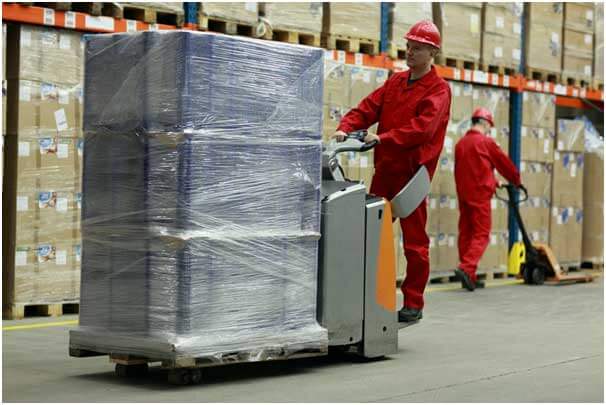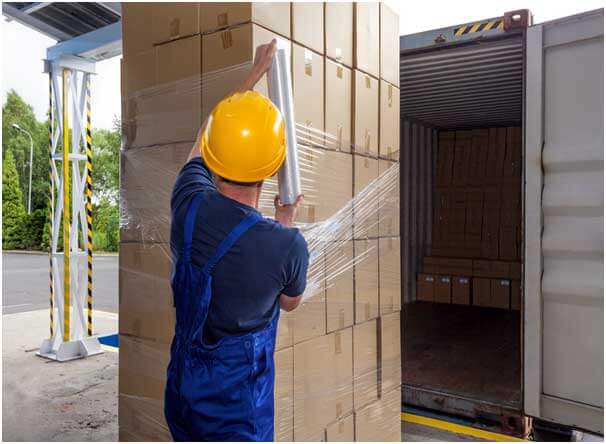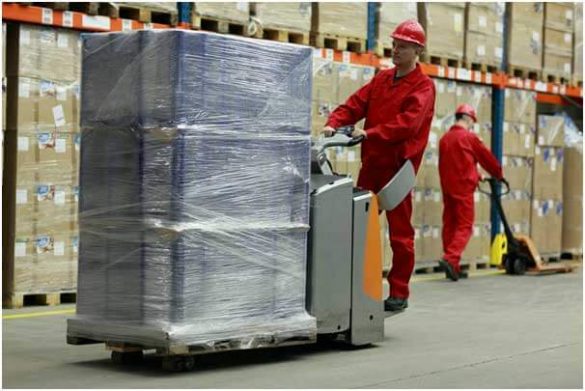It is far too common to find warehouses and other shipping facilities that don’t regularly review their wrapping and packing methods. While such assessments can feel like an additional burden, they are a necessary part of staying efficient. If you don’t check to see if your pallet wrapping processes are working, how do you know that they’re helping your operation and not hindering it?
You might have the best pallet wrap and the fastest workforce, but the reality is that your level of productivity is determined by how you pack and ship. There are all kinds of different ways, so it is up to you to decide which offers the biggest benefits to your business. The aim should always be to eliminate waste and unnecessary processes.
Keep reading this guide to the best pallet wrapping methods if you want to learn something new and boost your overall efficiency.

Maintain High Wrapping Standards
It is a common misconception to assume that pallet wrapping doesn’t require any skill. Just talk to an employee on the floor, who spends time packing, and you’ll be firmly corrected. It takes speed, mental acuity, and prolonged focus to ensure that accuracy and quality remains high even after hundreds of pallets have passed by. The best way to maintain standards is to invest in proper training. Set out the wrapping process, in detail, so that workers know exactly what is expected of them.
Organise the Floor Efficiently
If your warehouse floor plan is unsuitable and inefficient, it doesn’t matter how fast your wrappers are; they’ll always struggle to keep pace, because they spend more time wandering about looking for items than they do at the wrapping bays. You need to think carefully about where items are placed. For instance, the most commonly picked objects should always be positioned as close to the packing areas as possible. That way, workers are only wandering the furthest distances across the warehouse a handful of times.

Don’t Waste Time Unnecessarily
The importance of an efficient warehouse cannot be overstated. If there are boxes and bits of clutter littering every aisle, not only are your workers in greater danger of accidents, they’ll also find it tough to get around quickly. Implement a robust, firm ‘clean up’ plan if you run a warehouse that deals with lots of boxes. Commonly picked items should ideally be given double the amount of shelf space, so that you can store boxed stock close by, ready for replacement when needed.
Speed Up Bulk Orders
It is common for items to arrive at warehouses in bulk quantities and never need to be unwrapped for forward shipping. The best example of this would be if you needed to send out 150 printer cartridges, but they arrive at your premises in fully wrapped packages of fifty. It would be a waste of time to completely unwrap all of the packages, when you could instantly forward three whole and untouched ones to your wrapping area; where a delivery sticker can be added and nothing more. If you don’t have to waste time and money on unnecessary processes, simply don’t.
Make Sure That You Have the Right Wrapping Accessories
And finally, it is always worth investing a little more in reliable accessories and tools that promise to make your packing efforts faster. This includes high quality pallet wrap, sturdy pallets that don’t split or break during transit, and easily replaceable scissors, box knives, tape dispensers, and gloves for wrappers. These smaller items should be strong and tough, but they tend to get lost regularly, so they must also be available in large quantities.

